The Nakajima C6N Saiun (彩雲, "Iridescent Cloud") was the fastest IJN carrier-based reconnaissance aircraft of the war. Very advanced for its time, it first flew on 15 May 1943, and was produced and introduced from September 1944 on the few surviving carriers. Allied reporting name "Myrt" (M for reconnaissance models). Only 463 were delivered in six main and two sub-versions on a short production span. It was not a dogfighter but more Mosquito-like in some ways. No fighter of the USN or USAAF could catch the Saiun in WW2. #IJN #imperialjapanesenavy #nakajima #saiun
But since the company also worked on the latest Homare capable of 2,000 hp (1,500 kW) the dual powerplant, which had known cooling issues, was abandoned. Nakajima decided went for the single-engine layout, but meantime, engineers of the engines department bank tests were less than stellar. The output fell short of expectations. The project had to be revised to be as nimble, light and streamlined as possible. The C6N made its first flight on 15 May 1943. The prototype demonstrating 639 km/h (345 kn; 397 mph), less than specified, and it was by pushing Homare engine to its very limits. It proved generally was disappointing especially at altitude. Therefore Nakajima went on pushing the enveloped on 18 further prototypes and pre-production models. Eventually, it seems the last was ablt to reach the specified 650 kph and had better altitude characteristics, and the Saiun was ordered at last by the IJN in February 1944.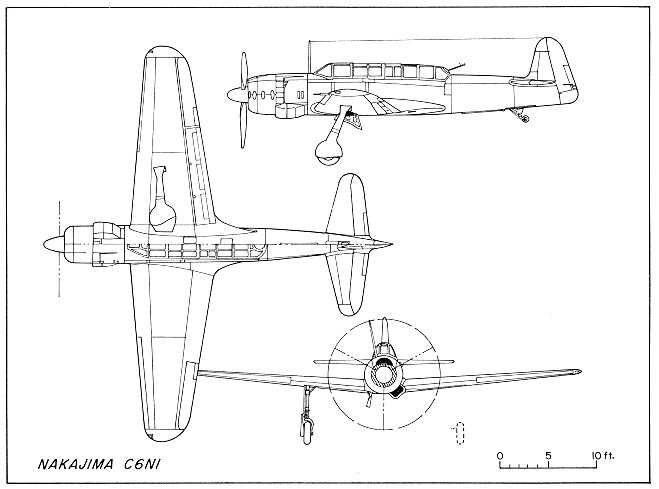 The final result had a long and extremely narrow cylindrical fuselage: Its diameter started as the same as the engine and was narrowed gradually down to the tail. There was a single, long canopy under which sat all three crewmen in tandem: Pilot, Observer and rear gunner. Due to weight savings, there were no armor anywhere to protect the pilot but at least self-sealing tanks.
The final result had a long and extremely narrow cylindrical fuselage: Its diameter started as the same as the engine and was narrowed gradually down to the tail. There was a single, long canopy under which sat all three crewmen in tandem: Pilot, Observer and rear gunner. Due to weight savings, there were no armor anywhere to protect the pilot but at least self-sealing tanks.
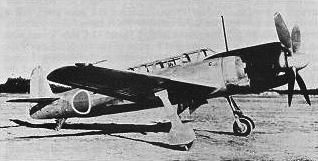 The prototype flew with a Nakajima NK9B Homare 11, which was a 18-cylinder, air-cooled radial piston engine which devemoped 1,485 kW (1,991 hp) less than the expected 2,000 hp. The output treshold was surpassed with the Homare 23, 25 and the late war Homare 42 producing 2,200 hp (1,640 kW). Unfortunately it was way too big to fit the C6N. Nevertheless, the Myrt was upgraded to the NK9K-L Homare 22 and Nakajima NK9H Homare 21 in tests, the production C6N1 Saiun Model 11 with its three-blade propeller being equipped with the NK9H Homare 21 engine. The best variant was the C6N2 Test production Saiun Kai which had a four-blade propeller and the new 1,980-hp (1,476-kW) Nakajima NK9K-L Homare 24-Ru turbocharged engine for altitude flights. Only two prototypes in February 1945 tests this configuration.
The prototype flew with a Nakajima NK9B Homare 11, which was a 18-cylinder, air-cooled radial piston engine which devemoped 1,485 kW (1,991 hp) less than the expected 2,000 hp. The output treshold was surpassed with the Homare 23, 25 and the late war Homare 42 producing 2,200 hp (1,640 kW). Unfortunately it was way too big to fit the C6N. Nevertheless, the Myrt was upgraded to the NK9K-L Homare 22 and Nakajima NK9H Homare 21 in tests, the production C6N1 Saiun Model 11 with its three-blade propeller being equipped with the NK9H Homare 21 engine. The best variant was the C6N2 Test production Saiun Kai which had a four-blade propeller and the new 1,980-hp (1,476-kW) Nakajima NK9K-L Homare 24-Ru turbocharged engine for altitude flights. Only two prototypes in February 1945 tests this configuration.
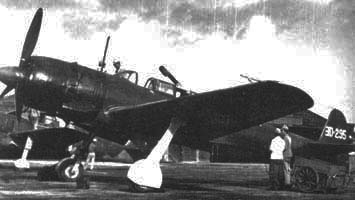 Only one large production variant, C6N1, and the basic Type 17 pre-production serie. About four more prototypes and 5 projects. Interestingly the success of the Mosquito led to the design of an equivalent version, the wooden-built C6N6. However like the others it remained at paper stage only.
Only one large production variant, C6N1, and the basic Type 17 pre-production serie. About four more prototypes and 5 projects. Interestingly the success of the Mosquito led to the design of an equivalent version, the wooden-built C6N6. However like the others it remained at paper stage only.
-C6N1 Experimental Type 17 carrier reconnaissance plane (17-Shi Kanjō Teisatsuki)
-3 prototypes, 16 supplementary prototypes with 4-blade propeller (later 3-blased) and NK9K-L Homare 22 engine
-Modified prototype with the NK9H Homare 21 engine renamed Shisei Saiun for pre-production in July 1943.
-C6N1 Saiun Model 11 Production model. 3-blade prop. and Nakajima NK9H Homare 21.
-Project torpedo bomber C6N1-B (Model 21)
-Prototype C6N1 Saiun Model 11 night fighter variant*
-Two C6N2 Test production Saiun Kai (Model 12), 4-blade prop. 1,980-hp (1,476-kW) NK9K-L Homare 24-Ru (turbocharged), February 1945.
-Project C6N3 high-altitude night fighter variant C6N2 with 2x 20 mm cannons.
-Incomplete prototype: C6N4 Test production Saiun Kai 2 with the MK9A Ha 43-11 Ru turbocharged.
-Project C6N5 Saiun Kai 3 torpedo bomber.
-Project C6N6 Test production Saiun Kai 4, Wooden-built.
The Night Fighter:
This was not a regulation naval aircraft as the C6N1-S was not discovered in IJN official documents (otherwise burnt?). It had a 30 mm Type 5 cannon in the back, transverse-firing, five production models received two extra 20 mm Type 99-1 cannons, one of which is housed at the Paul E. Garber Preservation and Storage Facility.
-Yokosuka Kōkūtai, 121, 131st, 132nd, 141st, 171st, 210th, 302nd, 343rd, 701st, 723rd, 752nd, 762nd, 801st and 1001st Kōkūtai.
It was also used by the Navy land-based Aerial Squadron for Reconnaissance, and the 3rd, 4th, 11th, 12th and 102nd Hikōtai.
It was also used by Kamikaze groups in mid-1945, the 1st Mitate Special Attack Group (from 752nd Kōkūtai, active), Sairyū Unit (from 752nd Kōkūtai, disbanded without a first sortie) and "Saiun Unit" (models from 723rd Kōkūtai, no sortie).
Design development
The C6N was developed from a 1942 IJN specification calling for a carrier-based reconnaissance plane with a specified speed of 350 knots (650 km/h) at 6,000 over 2,500 nautical miles (4,960 km) or range. Nakajima proposed its N-50 at first, which had two 1,000 hp (750 kW) engines in tandem inside the fuselage and driving two propellers on the wings to help clean up the latter from any drag.But since the company also worked on the latest Homare capable of 2,000 hp (1,500 kW) the dual powerplant, which had known cooling issues, was abandoned. Nakajima decided went for the single-engine layout, but meantime, engineers of the engines department bank tests were less than stellar. The output fell short of expectations. The project had to be revised to be as nimble, light and streamlined as possible. The C6N made its first flight on 15 May 1943. The prototype demonstrating 639 km/h (345 kn; 397 mph), less than specified, and it was by pushing Homare engine to its very limits. It proved generally was disappointing especially at altitude. Therefore Nakajima went on pushing the enveloped on 18 further prototypes and pre-production models. Eventually, it seems the last was ablt to reach the specified 650 kph and had better altitude characteristics, and the Saiun was ordered at last by the IJN in February 1944.
Detailed Design
 The final result had a long and extremely narrow cylindrical fuselage: Its diameter started as the same as the engine and was narrowed gradually down to the tail. There was a single, long canopy under which sat all three crewmen in tandem: Pilot, Observer and rear gunner. Due to weight savings, there were no armor anywhere to protect the pilot but at least self-sealing tanks.
The final result had a long and extremely narrow cylindrical fuselage: Its diameter started as the same as the engine and was narrowed gradually down to the tail. There was a single, long canopy under which sat all three crewmen in tandem: Pilot, Observer and rear gunner. Due to weight savings, there were no armor anywhere to protect the pilot but at least self-sealing tanks.
General structure and wings
The C6N had classic Nakajima low-mounted laminar flow wings, which span was almost equal to the fuselage, and which housed fuel tanks. They were fitted with Fowler and slit flaps, plus leading-edge slats helping to diminish landing speed as much as possible thanks to aircraft carrier use. Like the B6N Tenzan torpedo bomber they shared many characteristics and parts, including their vertical stabilizer, angled slightly forward to take less space while staying efficient, calculated with drag in mind. Construction was all-metal, with stressed duralumin over aluminium framing and steel internal structural framing. The landing gear was classic, deploying outwards for a better landing span, same as the B6N. The tail wheel was fully folding inside, leaving no bump. In general the profile was very clean, with as few asperities as possible, including no air intake.Powerplant & Performances
 The prototype flew with a Nakajima NK9B Homare 11, which was a 18-cylinder, air-cooled radial piston engine which devemoped 1,485 kW (1,991 hp) less than the expected 2,000 hp. The output treshold was surpassed with the Homare 23, 25 and the late war Homare 42 producing 2,200 hp (1,640 kW). Unfortunately it was way too big to fit the C6N. Nevertheless, the Myrt was upgraded to the NK9K-L Homare 22 and Nakajima NK9H Homare 21 in tests, the production C6N1 Saiun Model 11 with its three-blade propeller being equipped with the NK9H Homare 21 engine. The best variant was the C6N2 Test production Saiun Kai which had a four-blade propeller and the new 1,980-hp (1,476-kW) Nakajima NK9K-L Homare 24-Ru turbocharged engine for altitude flights. Only two prototypes in February 1945 tests this configuration.
The prototype flew with a Nakajima NK9B Homare 11, which was a 18-cylinder, air-cooled radial piston engine which devemoped 1,485 kW (1,991 hp) less than the expected 2,000 hp. The output treshold was surpassed with the Homare 23, 25 and the late war Homare 42 producing 2,200 hp (1,640 kW). Unfortunately it was way too big to fit the C6N. Nevertheless, the Myrt was upgraded to the NK9K-L Homare 22 and Nakajima NK9H Homare 21 in tests, the production C6N1 Saiun Model 11 with its three-blade propeller being equipped with the NK9H Homare 21 engine. The best variant was the C6N2 Test production Saiun Kai which had a four-blade propeller and the new 1,980-hp (1,476-kW) Nakajima NK9K-L Homare 24-Ru turbocharged engine for altitude flights. Only two prototypes in February 1945 tests this configuration.
Armament
Due to its role and speed constraints, the C6N carried no significant armament as designed, just a single lexibly-mounted, rearward-firing 7.92 mm Type 1 machine gun, manned by the tail gunner. When not in use, it was folded inside the fuselage. Theoretically, if converted as an attack plane, it could have been equipped with attach points for a variety of bombs and there was definitely hardpoints under the belly to hold an additional fuel tank, extending the range. From there it was still possible to attach a standard aerial torpedo, yet with miuch degraded performances. During the war various tests were also made as an interceptor, with an angled dorsal gun, either a pair of 20mm, or a single 30mm to deal with B-29 bombers in 1945, inspired by the German Schräge Musik system. They were tested but no production followed (see variants below).Production and Variants
 Only one large production variant, C6N1, and the basic Type 17 pre-production serie. About four more prototypes and 5 projects. Interestingly the success of the Mosquito led to the design of an equivalent version, the wooden-built C6N6. However like the others it remained at paper stage only.
Only one large production variant, C6N1, and the basic Type 17 pre-production serie. About four more prototypes and 5 projects. Interestingly the success of the Mosquito led to the design of an equivalent version, the wooden-built C6N6. However like the others it remained at paper stage only.-C6N1 Experimental Type 17 carrier reconnaissance plane (17-Shi Kanjō Teisatsuki)
-3 prototypes, 16 supplementary prototypes with 4-blade propeller (later 3-blased) and NK9K-L Homare 22 engine
-Modified prototype with the NK9H Homare 21 engine renamed Shisei Saiun for pre-production in July 1943.
-C6N1 Saiun Model 11 Production model. 3-blade prop. and Nakajima NK9H Homare 21.
-Project torpedo bomber C6N1-B (Model 21)
-Prototype C6N1 Saiun Model 11 night fighter variant*
-Two C6N2 Test production Saiun Kai (Model 12), 4-blade prop. 1,980-hp (1,476-kW) NK9K-L Homare 24-Ru (turbocharged), February 1945.
-Project C6N3 high-altitude night fighter variant C6N2 with 2x 20 mm cannons.
-Incomplete prototype: C6N4 Test production Saiun Kai 2 with the MK9A Ha 43-11 Ru turbocharged.
-Project C6N5 Saiun Kai 3 torpedo bomber.
-Project C6N6 Test production Saiun Kai 4, Wooden-built.
The Night Fighter:
This was not a regulation naval aircraft as the C6N1-S was not discovered in IJN official documents (otherwise burnt?). It had a 30 mm Type 5 cannon in the back, transverse-firing, five production models received two extra 20 mm Type 99-1 cannons, one of which is housed at the Paul E. Garber Preservation and Storage Facility.
Service
The C6N was deployed in the following naval air groups:-Yokosuka Kōkūtai, 121, 131st, 132nd, 141st, 171st, 210th, 302nd, 343rd, 701st, 723rd, 752nd, 762nd, 801st and 1001st Kōkūtai.
It was also used by the Navy land-based Aerial Squadron for Reconnaissance, and the 3rd, 4th, 11th, 12th and 102nd Hikōtai.
It was also used by Kamikaze groups in mid-1945, the 1st Mitate Special Attack Group (from 752nd Kōkūtai, active), Sairyū Unit (from 752nd Kōkūtai, disbanded without a first sortie) and "Saiun Unit" (models from 723rd Kōkūtai, no sortie).
⚙ specifications | |
| Empty Weight | 2,968 kg (6,543 lb) |
| Gross Weight | 4,500 kg (9,921 lb) |
| Max TO Weight | 5,260 kg (11,596 lb) |
| Length: | 11 m (36 ft 1 in) |
| Wingspan: | 12.5 m (41 ft 0 in) |
| Airfoil: | K151 ; tip: K159 |
| Height: | 3.96 m (13 ft) |
| Wing area: | 25.5 m2 (274 sq ft) |
| Wing Loading: | 176 kg/m2 (36 lb/sq ft) |
| Engine | Nakajima NK9B Homare 11 18-cylinder air-cooled radial piston engine, 1,485 kW (1,991 hp) |
| Propeller | Fixed pitch, 4 bladed metal, constant-speed metal propeller |
| Power/mass: | 0.33 kW/kg (0.20 hp/lb) |
| Top Speed | 610 km/h (380 mph, 330 kn) at 6,100 m (20,013 ft) |
| Cruiser Speed | 390 km/h (240 mph, 210 kn) |
| Rate of climb | ? |
| Time to altitude: | 6,000 m (19,685 ft) in 8 min 9 sec |
| Ceiling | 10,470 m (34,350 ft) |
| Ferry Range | 5,300 km (3,300 mi, 2,900 nmi) (with auxiliary fuel) |
| Range | ? |
| Armament | 1× flexibly mounted rearward-firing 7.92 mm Type 1 MG |
| Crew | 3: Pilot and observer, gunner |
Gallery:

C6N-1 Prototype in 1943

C6N-1 Model 11, Atsugi Naval Air Base, Kanagawa Prefecture, 3th Hikotai, 302th Kokutai, 1945

C6N-1, 11th Hokutai, 762th Kokutai, March 1945

C6N planned for IJN Shinano before she was sunk in 1944.

Suicide Attack Group Azusa Tokubetsu Kougekitai Kanoya NB March 1945

C6N-1 Matsuyama Naval Air Base, Ehime Prefecture, February 1945

C6N1-S of Kokutai 302, Atsugi Air Base, August 1945. Experimental interceptor with an oblically-mounted Type 5 30 mm gun. Crew: Hiroshi Yakuda, Taro Fukuda. One combat mission, in teh night of 1st August, firing ten rounds at a B-29. Fate unknown.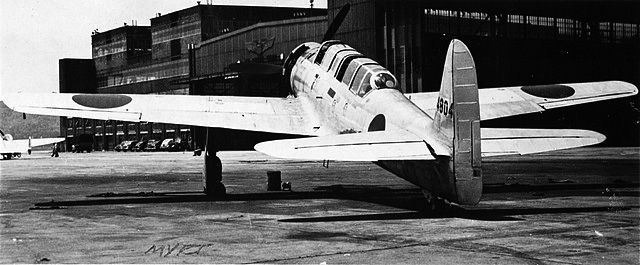
Nakajima C6N on tarmac
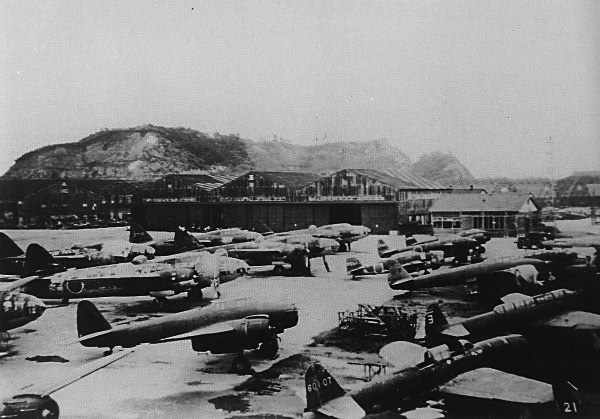
Nakajima C6N at Oppoma air base, 1945
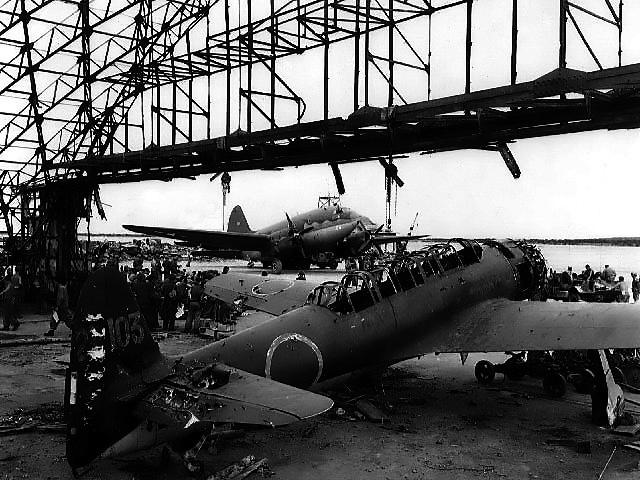
Nakajima C6N-1 of a reconnaissance aircraft 121st Kokutai
Francillon, René J. Japanese Carrier Air Groups, 1941–45. London; Osprey Publishing Ltd., 1979.
Huggins, Mark (January–February 2004). "Hunters over Tokyo: The JNAF's Air Defence of Japan 1944–1945". Air Enthusiast
Mondey, David. The Concise Guide to Axis Aircraft of World War II. London: Chancellor Press, 1996.
Famous Airplanes of the World No. 108 Carrier Reconnaissance Plane "Saiun", Bunrindō (Japan), 2005.
The Maru Mechanic No. 15 Nakajima C6N1 Carrier Based Rec. Saiun, Ushio Shobō (Japan), 1979.
Model Art, No. 458, Special issue Imperial Japanese Navy Air Force Suicide Attack Unit "Kamikaze", Model Art Co. Ltd.
Kazuhiko Osuo, Kamikaze, Kōjinsha (Japan), 2005.
wiki
on combinedfleet.com
airandspace.si.edu
militaryfactory.com/
airpages.ru/
aviastar.org/
daveswarbirds.com
On scalemates.com

C6N-1 Prototype in 1943

C6N-1 Model 11, Atsugi Naval Air Base, Kanagawa Prefecture, 3th Hikotai, 302th Kokutai, 1945

C6N-1, 11th Hokutai, 762th Kokutai, March 1945

C6N planned for IJN Shinano before she was sunk in 1944.

Suicide Attack Group Azusa Tokubetsu Kougekitai Kanoya NB March 1945

C6N-1 Matsuyama Naval Air Base, Ehime Prefecture, February 1945

C6N1-S of Kokutai 302, Atsugi Air Base, August 1945. Experimental interceptor with an oblically-mounted Type 5 30 mm gun. Crew: Hiroshi Yakuda, Taro Fukuda. One combat mission, in teh night of 1st August, firing ten rounds at a B-29. Fate unknown.
Photos

Nakajima C6N on tarmac

Nakajima C6N at Oppoma air base, 1945

Nakajima C6N-1 of a reconnaissance aircraft 121st Kokutai
Src/Read more about the Nakajima C6N:
Books
Francillon, René J. Japanese Aircraft of the Pacific War. London: Putnam & Company Ltd. 1970.Francillon, René J. Japanese Carrier Air Groups, 1941–45. London; Osprey Publishing Ltd., 1979.
Huggins, Mark (January–February 2004). "Hunters over Tokyo: The JNAF's Air Defence of Japan 1944–1945". Air Enthusiast
Mondey, David. The Concise Guide to Axis Aircraft of World War II. London: Chancellor Press, 1996.
Famous Airplanes of the World No. 108 Carrier Reconnaissance Plane "Saiun", Bunrindō (Japan), 2005.
The Maru Mechanic No. 15 Nakajima C6N1 Carrier Based Rec. Saiun, Ushio Shobō (Japan), 1979.
Model Art, No. 458, Special issue Imperial Japanese Navy Air Force Suicide Attack Unit "Kamikaze", Model Art Co. Ltd.
Kazuhiko Osuo, Kamikaze, Kōjinsha (Japan), 2005.
Links
historyofwar.org/wiki
on combinedfleet.com
airandspace.si.edu
militaryfactory.com/
airpages.ru/
aviastar.org/
daveswarbirds.com
On scalemates.com
- Lohner E (1913)
- Macchi M3 (1916)
- Macchi M5 (1918)
- Ansaldo ISVA (1918)
- Sopwith Baby (1916)
- Short 184 (1916)
- Fairey Campania (1917)
- Sopwith Cuckoo (1917)
- Felixstowe F.2 (1917)
- Friedrichshafen FF 33 (1916)
- Albatros W4 (1916)
- Albatros W8 (1918)
- Hanriot HD.2
- Grigorovitch M5
- IJN Farman MF.7
- IJN Yokosho Type Mo
- Yokosho Rogou Kougata (1917)
- Yokosuka Igo-Ko (1920)
- Curtiss N9 (1916)
- Aeromarine 39
- Vought VE-7
- Douglas DT (1921)
- Boeing FB.5 (1923)
- Boeing F4B (1928)
- Vought O2U/O3U Corsair (1928)
- Blackburn Blackburn (1922)
- Supermarine Seagull (1922)
- Blackburn Ripon (1926)
- Fairey IIIF (1927)
- Fairey Seal (1930)
- LGL-32 C.1 (1927)
- Caspar U1 (1921)
- Dornier Do J Wal (1922)
- Rohrbach R-III (1924)
- Mitsubishi 1MF (1923)
- Mitsubishi B1M (1923)
- Yokosuka E1Y (1923)
- Nakajima A1N (1927)
- Nakajima E2N (1927)
- Mitsubishi B2M (1927)
- Nakajima A4N (1929)
- CANT 18
WW1
✠ K.u.K. Seefliegerkorps:
 Italian Naval Aviation
Italian Naval Aviation
 RNAS
RNAS
 Marineflieger
Marineflieger
 French Naval Aviation
French Naval Aviation
 Russian Naval Aviation
Russian Naval Aviation
 IJN Air Service
IJN Air Service
 USA
USA
Interwar
 Interwar US
Interwar US
 Interwar Britain
Interwar Britain
 Interwar France
Interwar France
 Interwar Germany
Interwar Germany
 Interwar Japan
Interwar Japan
 Interwar Italy
Interwar Italy
- Curtiss SOC seagull (1934)
- Grumman FF (1931)
- Curtiss F11C Goshawk (1932)
- Grumman F2F (1933)
- Grumman F3F (1935)
- Northrop BT-1 (1935)
- Grumman J2F Duck (1936)
- Consolidated PBY Catalina (1935)
- Brewster/NAF SBN-1 (1936)
- Curtiss SBC Helldiver (1936)
- Vought SB2U Vindicator (1936)
- Brewster F2A Buffalo (1937)
- Douglas TBD Devastator (1937)
- Vought Kingfisher (1938)
- Curtiss SO3C Seamew (1939)
- Douglas SBD Dauntless (1939)
- Grumman F4F Wildcat (1940)
- F4U Corsair (NE) (1940)
- Brewster SB2A Buccaneer (1941)
- Grumman TBF/TBM Avenger (1941)
- Consolidated TBY Sea Wolf (1941)
- Grumman F6F Hellcat (1942)
- Curtiss SB2C Helldiver (1942)
- Curtiss SC Seahawk (1944)
- Grumman F8F Bearcat (1944)
- Ryan FR-1 Fireball (1944)
- Douglas AD-1 Skyraider (1945)
Fleet Air Arm
- Fairey Swordfish (1934)
- Blackburn Shark (1934)
- Supermarine Walrus (1936)
- Fairey Seafox (1936)
- Blackburn Skua (1937)
- Short Sunderland (1937)
- Blackburn Roc (1938)
- Fairey Albacore (1940)
- Fairey Fulmar (1940)
- Grumman Martlet (1941)
- Hawker sea Hurricane (1941)
- Brewster Bermuda (1942)
- Fairey Barracuda (1943)
- Fairey Firefly (1943)
- Grumman Tarpon (1943)
- Grumman Gannet (1943)
- Supermarine seafire (1943)
- Blackburn Firebrand (1944)
- Hawker Sea Fury (1944)
IJN aviation
- Aichi D1A "Susie" (1934)
- Mitsubishi A5M "Claude" (1935)
- Nakajima A4N (1935)
- Yokosuka B4Y "Jean" (1935)
- Mitsubishi G3M "Nell" (1935)
- Nakajima E8N "Dave" (1935)
- Kawanishi E7K "Alf" (1935)
- Nakajima B5N "Kate" (1937)
- Kawanishi H6K "Mavis" (1938)
- Aichi D3A "Val" (1940)
- Mitsubishi A6M "zeke" (1940)
- Nakajima E14Y "Glen" (1941)
- Nakajima B6N "Jill" (1941)
- Mitsubishi F1M "pete" (1941)
- Aichi E13A Reisu "Jake" (1941)
- Kawanishi E15K Shiun "Norm" (1941)
- Nakajima C6N Saiun "Myrt" (1942)
- Yokosuka D4Y "Judy" (1942)
- Kyushu Q1W Tokai "Lorna" (1944)
Luftwaffe
- Arado 196 (1937)
- Me109 T (1938)
- Blohm & Voss 138 Seedrache (1940)
Italian Aviation
- Savoia-Marchetti S.55
- IMAM Ro.43/44
- CANT Z.501 Gabbiano
- CANT Z.506 Airone
- CANT Z.508
- CANT Z.511
French Aeronavale
- GL.300 (1926-39)
- Levasseur PL.5 (1927)
- Potez 452 (1935)
- Loire 210 (1936)
- Loire 130 (1937)
- LN 401 (1938)
Soviet Naval Aviation
- Shavrov SH-2 (1928)
- Tupolev TB-1P (1931)
- Beriev MBR-2 (1930)
- Tupolev MR-6 (1933)
- Tupolev MTB-1 (1934)
- Beriev Be-2 (1936)
- Polikarpov I16 naval (1936)
- Tupolev MTB-2 (1937)
- Ilyushine DB-3T/TP (1937)
- Beriev Be-4 (1940)
-
Skoda Š-328V
R-XIII Idro
Fokker C.XI W (1934)
WW2
- De Havilland Sea Vixen
- Hawker Sea Hawk
- Supermarine Scimitar
- Blackburn Buccaneer
- Hawker Sea Harrier
- Douglas A4 Skyhawk
- Grumman F9F Panther
- Vought F8 Crusader
- McDonnell-Douglas F-4 Phantom-II
- North Am. A5 Vigilante
- TU-142
- Yak 38 forger
☢ Cold War
✧ NATO
 Fleet Air Arm
Fleet Air Arm
 US Navy
US Navy
☭ Warsaw Pact
Merch

Seafire Mark 45; HMS Pretoria Castle

Zeros vs its aversaries

Aichi D3A “Val” Junyo

Mitsubishi A5M poster

F4F wildcat

Macchi M5

SBD Dauntless Coral Sea

SBD Dauntless USS Enterprise

SBD-4 CV22